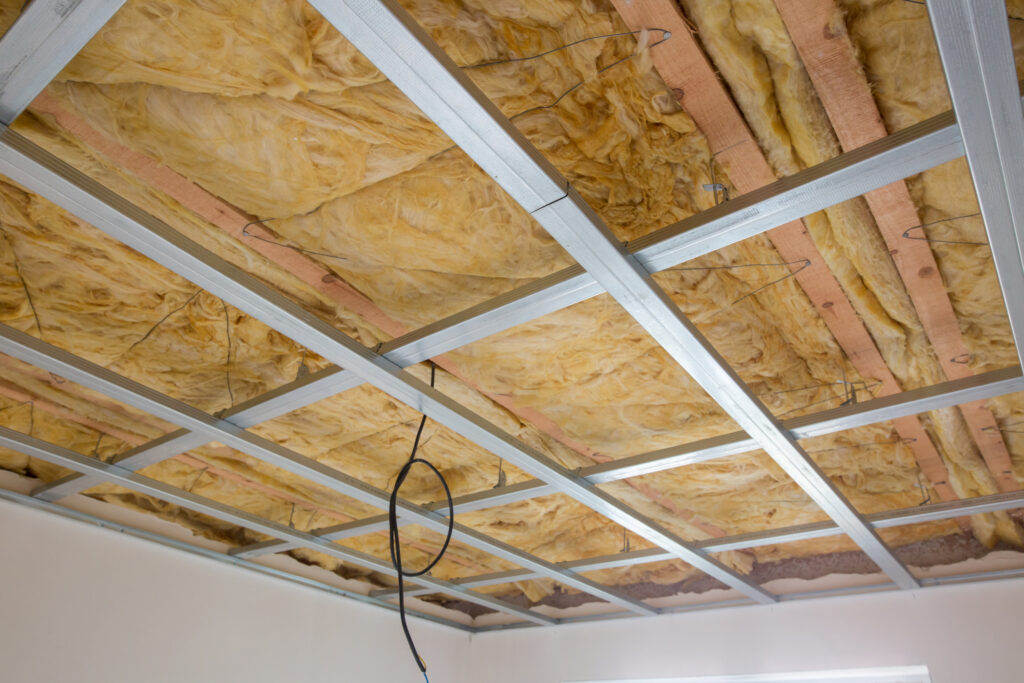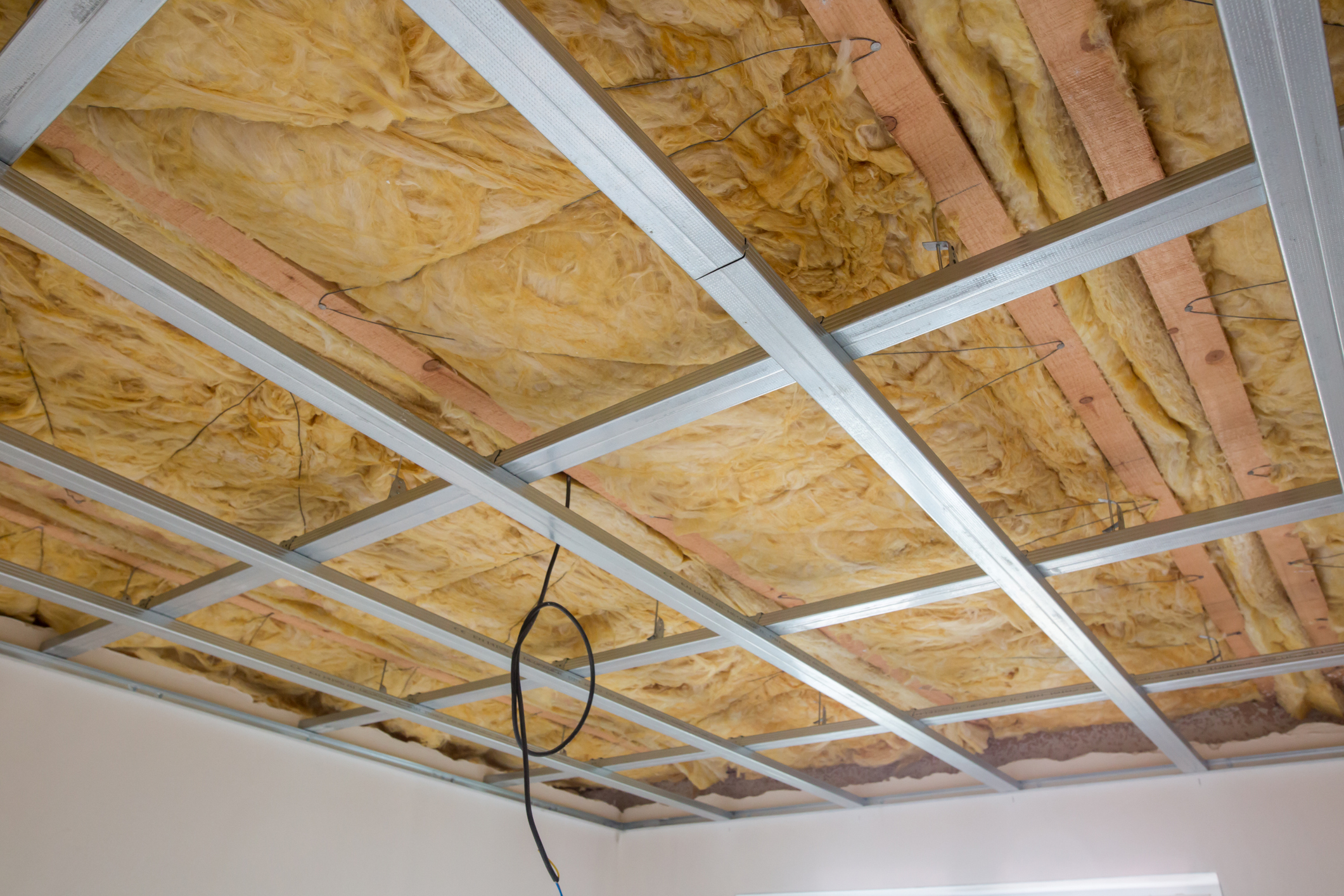Introduction: Can You Soundproof a Ceiling That’s Already Built?
If you live in an NYC apartment or an older home, you know how easily sound travels through ceilings. Every step, chair scrape, or late-night conversation from the floor above can feel like it’s happening in your own room. While new construction allows full control over insulation and framing, soundproofing an existing ceiling takes a little more creativity — but it’s absolutely possible.
Whether you’re in the middle of an apartment renovation, updating your kitchen, or simply trying to get some peace and quiet, there are smart ways to reduce noise without tearing your ceiling apart.

Understanding How Sound Moves Through Existing Ceilings
In most NYC buildings, sound passes through lightweight materials, shared joists, and small gaps. Two main noise types cause trouble:
- Airborne noise: voices, TV, or music that travels through the air and leaks through cracks or thin drywall.
- Impact noise: footsteps or dropped objects that vibrate through the floor structure and into the ceiling below.
Because the structure is already in place, the key is to add layers that block and absorb these noises — without major demolition.
Step-by-Step Methods for Soundproofing an Existing Ceiling
Add an Extra Layer of Drywall
Adding another sheet of ⅝-inch drywall to the existing ceiling increases mass, which helps block airborne noise. For better performance, use a sound-dampening compound (like Green Glue) between the layers to absorb vibration. It’s one of the simplest and most effective upgrades you can make without removing the existing structure.
Install Resilient Channels or Sound Isolation Clips
If you’re comfortable opening a small section of the ceiling, resilient channels or isolation clips can be installed beneath the joists. These create a small air gap that decouples the drywall from the structure, dramatically reducing vibration transfer. It’s a favorite technique in NYC apartment remodeling because it improves sound insulation without losing much ceiling height.
Use Acoustic Panels or Ceiling Clouds
When construction isn’t an option — like in rental units — decorative acoustic panels or “clouds” can help. They hang below the ceiling and absorb sound waves that bounce around the room, reducing echo and softening overall noise. Panels come in stylish shapes and fabrics, blending seamlessly into kitchens, offices, or living spaces.
Seal Gaps and Fixtures
Sound loves small openings. Sealing the perimeter of your ceiling, light fixtures, vents, and any penetrations with acoustic caulk prevents sound leaks that can make other upgrades less effective. It’s a small step that yields a big improvement in older NYC buildings.
Combine Ceiling Soundproofing With Broader Renovations
If you’re already planning a kitchen remodeling project in NYC or renovating your apartment, it’s the perfect time to enhance soundproofing. Combining ceiling upgrades with lighting changes, new drywall, or fresh paint is efficient and cost-effective.
For example:
- During kitchen remodeling, you can add sound-absorbing insulation above the ceiling before installing new fixtures.
- In full apartment renovations, combining resilient channels and mineral wool insulation in ceilings between floors can dramatically reduce both impact and airborne noise.
By integrating ceiling soundproofing into your remodeling plan, you save time and avoid doing the same work twice.
Common Mistakes to Avoid When Soundproofing Existing Ceilings
Even small oversights can limit results. Here are frequent issues to watch out for:
- Ignoring the edges: leaving unsealed gaps along walls and corners lets noise leak through.
- Relying on insulation alone: insulation helps with airborne sound but not with vibrations; use multiple layers.
- Skipping damping compounds: adding drywall without damping only increases mass, not vibration control.
- Overlooking upstairs flooring: sometimes improving the floor above (like adding rugs or underlayment) makes a huge difference.
Practical Expectations
Soundproofing an existing ceiling will not make your space 100% silent, but it can cut noise by 50–70%, depending on materials and structure. The goal is comfort — a quieter bedroom, calmer office, or less echo in a living space — not total silence. When done right, it significantly improves quality of life in dense NYC buildings.
How It Fits Into the Bigger Picture
Soundproofing your ceiling is part of a larger approach to urban living comfort. Together with proper wall insulation, window sealing, and under-floor sound mats, you can turn even a busy city apartment into a relaxing retreat.
This topic is directly related to our comprehensive guide on Soundproof Ceilings in NYC, which covers every stage of design, from new construction to high-performance materials. You can also explore related tips in our blog on Best Insulation for Soundproofing Basement Ceiling — perfect if your lower level doubles as a gym or workspace.
Conclusion: Small Changes, Big Difference
Even if your ceiling is already finished, soundproofing an existing ceiling is well within reach. Whether you’re adding mass with new drywall, installing acoustic panels, or combining these upgrades with a kitchen or apartment remodel, each step helps reclaim peace and quiet in your home.
Urban living doesn’t have to mean constant background noise. With the right materials and a little planning, your NYC home can sound as good as it looks.


